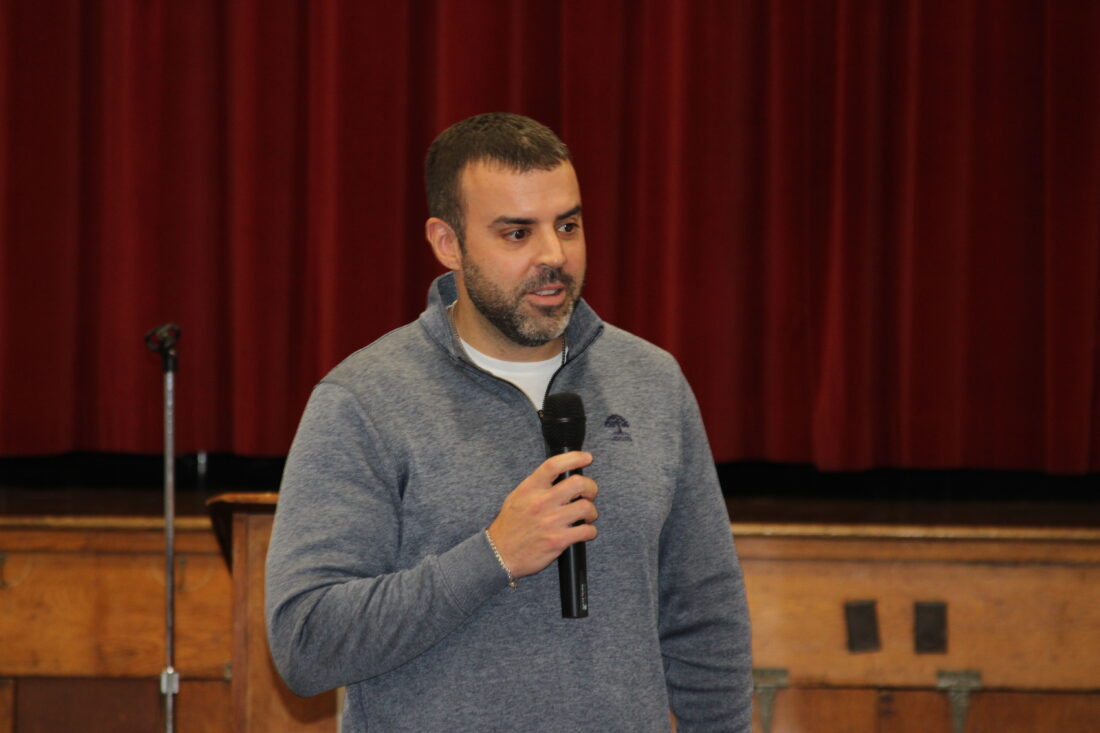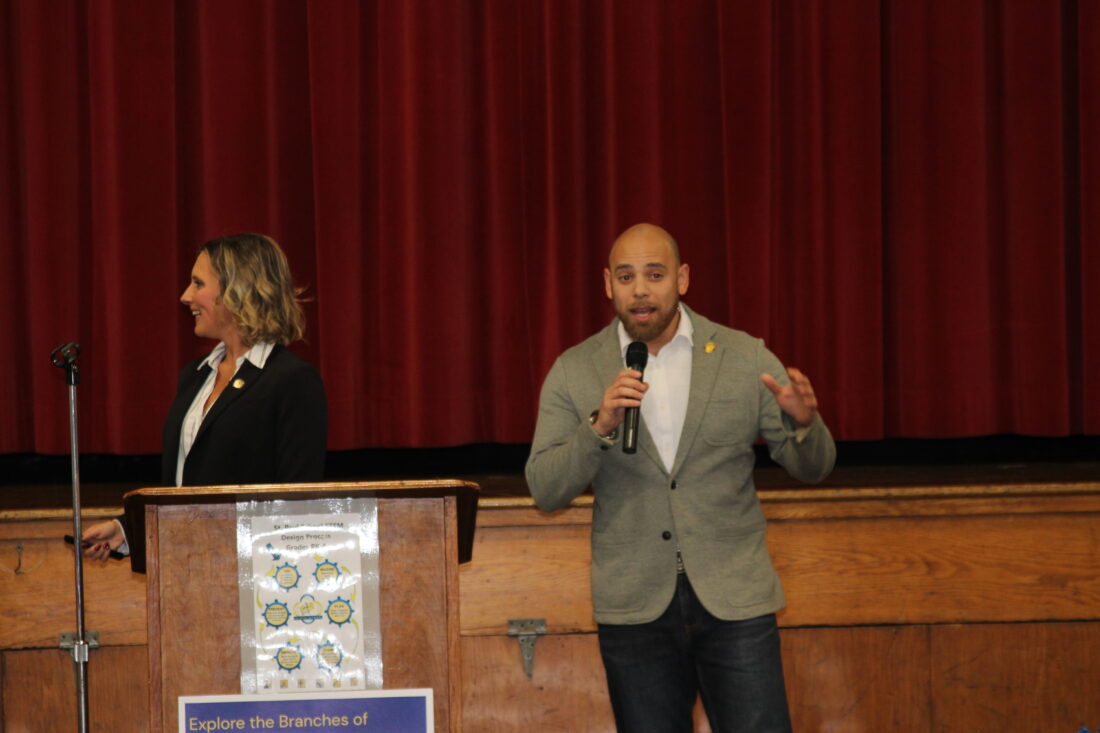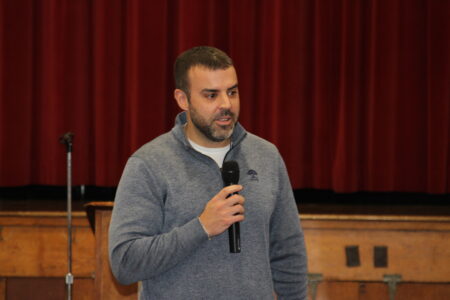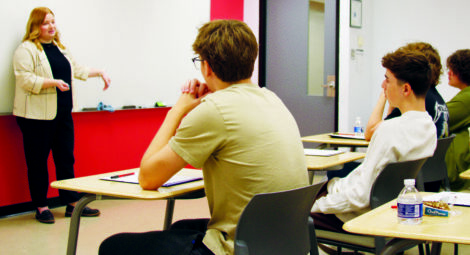St. Paul Civics Club hears from local officials
- Following their presentations the members of St. Paul’s Civics Club presented the elected officials with certificates of appreciation and replicas of the Constitution signed by all the club members. Shown from left are Ohio Seventh District Court of Appeals Judge Katie Dickey, Lacey Lindesmith, Austin Lindesmith, Mahoning County Court Judge Molly Johnson, Rosemary Dellamaggiora, Columbiana County Prosecutor Vito Abruzzino, Ohio Representative Monica Robb Blasdel, Lillian Rickard, Ohio Senator Al Cutrona, Aadi Patel. (Photo by Morgan Ahart)

Following their presentations the members of St. Paul’s Civics Club presented the elected officials with certificates of appreciation and replicas of the Constitution signed by all the club members. Shown from left are Ohio Seventh District Court of Appeals Judge Katie Dickey, Lacey Lindesmith, Austin Lindesmith, Mahoning County Court Judge Molly Johnson, Rosemary Dellamaggiora, Columbiana County Prosecutor Vito Abruzzino, Ohio Representative Monica Robb Blasdel, Lillian Rickard, Ohio Senator Al Cutrona, Aadi Patel. (Photo by Morgan Ahart)
SALEM — Elected officials from all three branches of government told students at St. Paul Elementary about the roles of each branch during the St. Paul Civics Club’s Branches of Government Night Friday.
The civics club was formed in September by St. Paul Parent and Club sponsor Emmy Prosko, who is an active-duty Lieutenant Colonel in the U.S. Army, and wanted to inspire and equip students to be the next generation of service-centered leaders and become involved in their community.
The club is open to students in grades 4-8 and meets twice per month. Diocese of Youngstown Associate Superintendent Jennifer Fischer said that St. Paul was fortunate that Prosko approached the school to form the club, noting that the value of leadership and service to one’s community were directly in line with Catholic values.
“We’re blessed that [Prosko] was willing to take this on, and that our guests came to speak to the students,” said Fischer.
Friday’s event saw Columbiana County Prosecutor Vito Abruzzino discuss the executive branch; Ohio Representative Monica Robb Blasdel, and Ohio Senator Al Cutrona discuss the legislative branch; and Mahoning County Court Judge Molly Johnson, Ohio Seventh District Court of Appeals Judge Katie Dickey discuss the judicial branch.
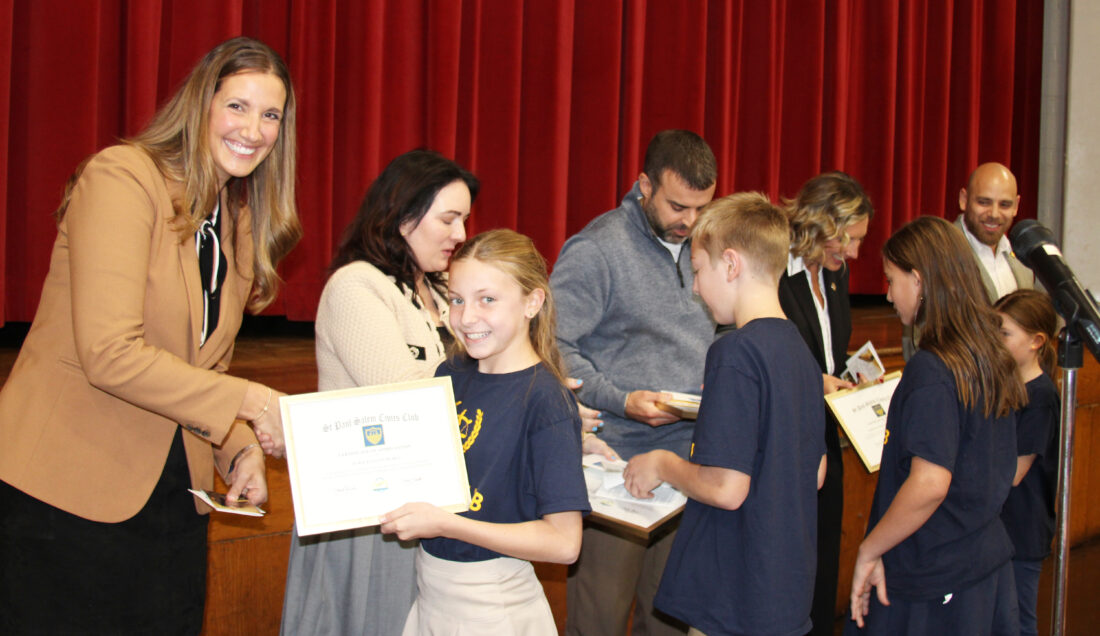
Abruzzino began by asking all of the students their names and greeted them individually. He said that while the legislative branch creates laws, and the judicial branch interprets laws to ensure they are fairly applied, the executive branch implements laws and their day-to-day application.
“The executive branch is in charge of getting things done. When you’re thinking of the executive branch, just remember those are the guys who make sure things get done,” said Abruzzino.
Abruzzino also noted that as the county prosecutor he oversees the enforcement of all criminal charges in Columbiana County, noting that this was unusual for a county of its size where local legal authorities of individual municipalities like a village auditor or city law director prosecute criminal charges within their community.
Cutrona and Blasdel reviewed the process of how a law is created beginning as a bill which must then be accepted and approved by two committees prior to approval by the house of representatives, before the process repeats in the senate, and is presented to the governor’s office to be signed into law or vetoed and returned to congress. Both also said that one of their primary roles as state officials is to be present within their districts to hear the needs and concerns of their constituents.
Blasdel said that many of the bills discussed in Ohio’s congress are citizen authored, and that while a bill is being considered in committee, citizens who have concerns about the bill or want to support its passage can either submit written testimony, or travel to Columbus to testify in person.

Cutrona said that the United States’ governmental structure was like “a three-legged stool” in which each of the legs are required to function and to keep each other in balance. He also discussed the budgetary power of the legislative branch, noting that it can appropriate funds to affect changes in addition to drafting and approving new legislation.
Dickey said that the judicial branch’s role is to interpret the law, and that every case a judge presides over represents a different set of laws and questions of legality to be adjudicated. Johnson asked students how they know if something was illegal, before explaining that judges and other agents of the judicial branch do so by referencing written law.
“It’s usually pretty easy to know if something was wrong, but that’s not the same thing as illegal,” said Johnson.
Johnson also explained the process of criminal prosecution, which she said begins with prosecutors determining what laws have been broken, and can be proved to have been broken, and files charges accordingly. From there, a judge and jury decide if the defendant is guilty, and a higher court decides if that decision was made properly.
Johnson and Dickey both noted that the judicial branch is unique because it has its own structure of internal checks and balances as higher courts rule on any disputes with the rulings of a lower court, beginning with a trial court, and ascending to the court of appeals, and supreme court respectively. Dickey stressed that appellate courts do not decide guilt or innocence, and instead only determine if the original trial was properly and fairly conducted. She also said that appeals are ruled on by a panel of multiple judges, and are typically final as the supreme court has discretionary authority, meaning that it can refuse to hear an appeal, and that the Ohio Supreme Court only accepts approximately 10 percent of requested cases, and that the federal supreme court accept even fewer cases.
